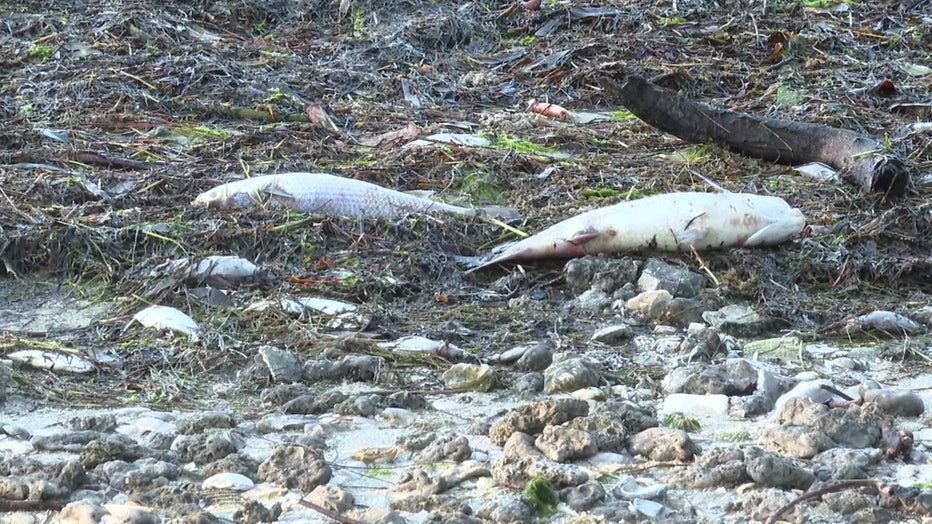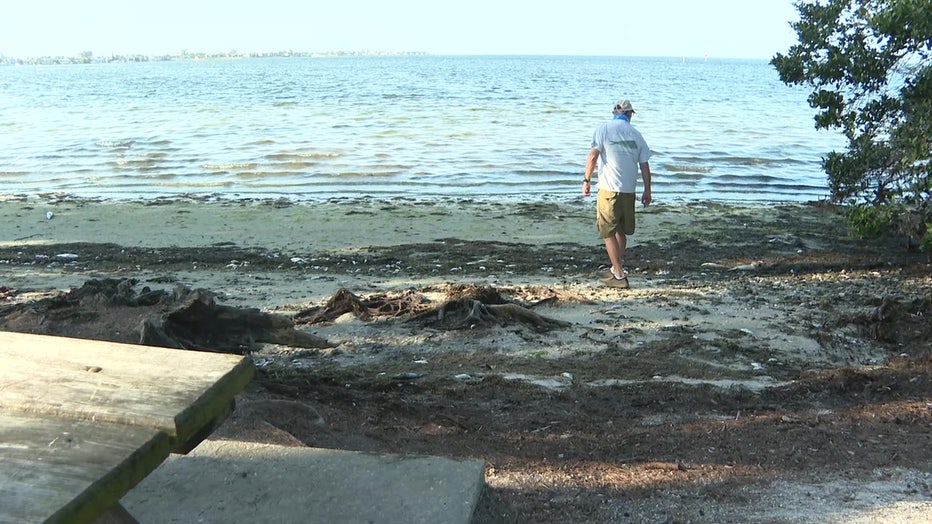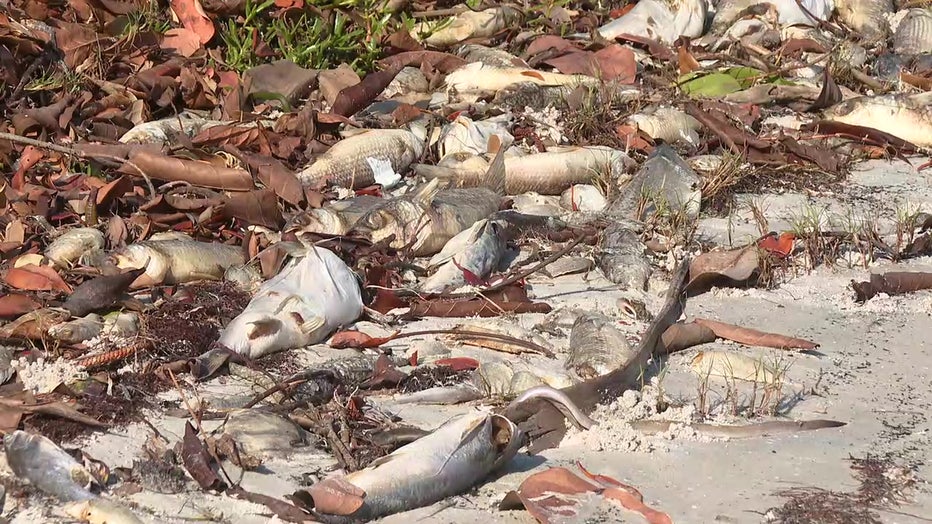What is causing red tide along Florida's Gulf coast?
ANNA MARIA ISLAND, Fla. - A toxic algae bloom that runs from Naples to Clearwater is wreaking havoc along the west coast.
As the wind shifts, dead fish continue to wash up in areas of Anna Maria Island.
"This red tide reoccurring is really hard on the guides and the people in our industry," said Captain Scott Moore.
You can argue, Captain Scott Moore knows the waters of Florida, better than any. As a charter captain on Holmes Beach for more than 40 years, he’s seen a lot of changes, including how long and how often red tide appears.

Red tide is killing fish along the Gulf Coast.
On Monday, a handful of boat trailers were parked at the Kingfish boat ramp off Holmes Beach during a time when it should be packed.
RELATED: Manatee rescued near Holmes Beach had watercraft wound, signs of red tide exposure
Red tide has appeared on and off Anna Maria Island.
"We had about three or four weeks ago we had a light burn that showed up, and then it disappeared, and then we had a couple of weeks of south wind, and it blew it back in here," explained Captain Moore.

A man walks along a beach that is being impacted by red tide.
Red tide has been detected from Naples to Clearwater Beach. Some areas are registering low while others are in the medium to high counts.
RELATED: Scientists prepare for second field test of clay mixture used to mitigate red tide
Captain Moore believes there are a few things fueling this red tide bloom.

A dead fish in water impacted by red tide.
"Our nutrient level is definitely up, the hurricane didn’t help but releasing that Okeechobee water wasn’t a good thing either for us on the west coast of Florida," he said.
From Bayshore Drive in Sarasota to the Ringling Bridge, Suncoast Waterkeepers have documented the impacts of the bloom.
On Monday, visitors getting off boats at Marina Jack could be heard coughing.
"2018’s red tide followed 2017’s Hurricane Irma. In 2022, we had Hurricane Ian. What we are a little bit concerned about is will 2023 turn out like 2018 in terms of red tide," asked Dr. David Tomasko, director of Sarasota Bay Estuary Program. He said the amount of dead fish washing up this early is a concern.

Red tide is killing fish along the Gulf Coast.
"One hundred pounds of dead fish is about seven pounds of nitrogen that can fuel the next round of red tide growth. When red tide starts killing fish it starts making its own fertilizer and so that’s not really very good because then it becomes self-sustaining," he explained.
READ: Some people susceptible to neurological effects of red tide, new study suggests
Manatee County cleans the beaches daily, while Sarasota County continues to monitor conditions. Marine debris has yet to meet Sarasota County’s threshold for cleaning up, but it could happen soon if winds continue to pick up.
"The fear is that this is like another 2018 coming up and hopefully that doesn’t happen, but we can’t guarantee it. We need to get our act together because if we don’t, this could sort of be like the norm moving forward. Humans don’t make red tide but we make it worse, what we need to do is get better control of our waste water infrastructure our stormwater retrofits, people need to do a better job of protecting mangroves, not cutting them down. We need to do more oyster reef preservation projects, and we need people to do their own part like don’t put your grass clippings in the storm drain and pick up after your dog," said Dr.David Tomasko.
LINK: Click here to see the current red tide conditions.

